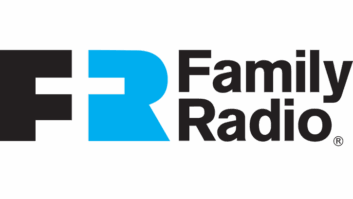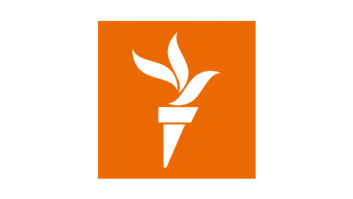What in the world is “radio illustration,” you ask? Who can listen to images like illustrations and cartoons? Well, it’s not quite that simple. The best explanation is looking at it from the perspective of the cartoonist!


Radio illustration is kind of like visual radio — these logos and cartoons supplement broadcasts and stations by adding something for the listener’s eye and imagination. Dan Rosandich has been in the biz since he was a teenager, and shares some examples of his work here.
I began drawing cartoons and funny illustrations when I was a little kid. It was an obsession that has carried on into my adulthood. Radio World asked me to share some of my work and the story behind it.
In the early 1970s, when the CB radio craze was rising in popularity, I placed a small classified ad in a trade publication. S-9 Magazine was devoted to citizen band radio enthusiasts across the United States and Canada. With knowledge in the area of CB and an interest in cartooning, I decided to offer to create “custom QSL cards.” (As many Radio World readers will know, a QSL is a radio enthusiast’s calling card of sorts. They’re a postcard-sized with the user’s call letters, their preferred channel they hang out at and of course, their “handle.” Even radio broadcasters sometimes have them!)
In that ad, I offered to do custom cartoons for CB enthusiasts’ QSL cards, and those interested would send a particular amount of money (either by check, cash or money order). The ad came out, and before long, a stream of envelopes started arriving at my address with money and people’s ideas for their cards! It was my way of being vindicated as an artist. I had arrived!
Whatever the amount was, in those days, it wasn’t much, but my neighbor had worked at a local bank and one day asked me, “Dan, where are you getting all of these Canadian $10 bills?”

I re-ran that ad a few times until things slowed down, but this experience later helped me to realize my desire to become a full-time cartoonist.
Not long afterward, I started to create what is known as “gag cartoons” in the magazine publishing business.
You’ve seen them — those small illustrated jokes to which publications, trade journals and even magazines like the Saturday Evening Post [yes , still around! — Ed.] might devote entire back pages in certain issues.

I dove full speed ahead into the freelance cartooning business and noticed after a few years that I’d acquired a relatively steady stable of clients who loved my work, and I drew a lot of gag panels for many of them.
After many years in the freelance illustration business, along came digital technology. I began studying HTML and web design and launched an online portfolio, offering my illustration services. Since then, I’ve illustrated a lot of ham operator radio content, as well as radio broadcast cartoons, logos and illustrations.

With the help of Adobe Photoshop editing software, I can accommodate clients in their professional graphics needs, whether it’s a special promotional banner, logo or other character cartoons needed to promote a station or broadcaster’s event or station. Artwork can be formatted in specific sizes, color enhancements and more.
I recently worked with KCYS(FM) in Astoria, Ore., which needed a specific banner to promote their station. The image they needed was for a downloadable app; the graphic appears as an introductory image for this app, which users can download to listen to their station anywhere.

HOW IT WORKS
Other illustrators may have their own processes but here’s how it works for me. A station owner contacts me with a concept or idea; I create a rough sketch based on that information. The more information supplied, the better; specifics help me to create a more detailed illustration of the cartoon needed. I send that rough sketch for the station owner’s (or general manager’s) review; they reply with feedback about what needs to be changed or modified, prior to formatting the final acceptable art into a specific format.
JPEG files work best for apps or web, while TIFF format works best for print or hard copy.

As for pricing these kinds of cartoons, there is no universal pricing; every need or usage applied to a custom cartoon is different. I recommend you request a specific quote and specify how the artwork will be used. One station executive may want a cartoon for use on a downloadable app, another may want a detailed logo-type of cartoon to use on a website, social media, in print advertising or on apparel.
My general rule of thumb is “the greater the usage applied to an image, the greater the intrinsic value to that work,” so higher fees are applied to artwork with a greater usage applied to it.

Other uses for radio station cartoon images include:
• Station calendars
• Posters to promote an event or gathering
• Social media (Facebook, Twitter, LinkedIn, etc.)
• Downloadable apps for listeners
• Apparel (T-shirts, caps and coasters)
• Business stationery
• Your company or station’s QSL card
• Customized greeting cards (Christmas, Hannukah, Easter, etc.)
• Coloring books for children
• Banners for use in email promotions

This is a small list, but you get the idea: Custom illustration makes a point and can have an impact with your listeners.
Find more examples of the author’s work as well as contact informationathttps://danscartoons.com/.






